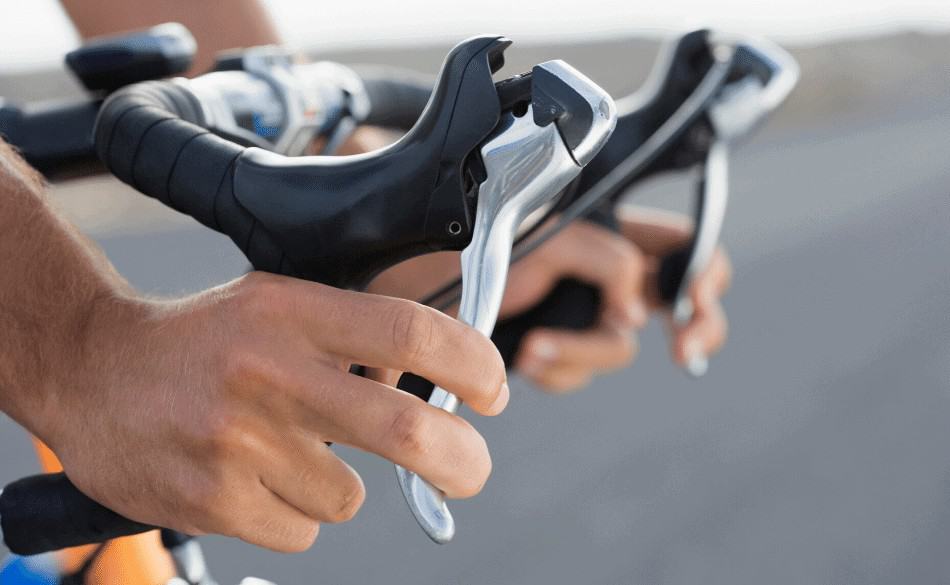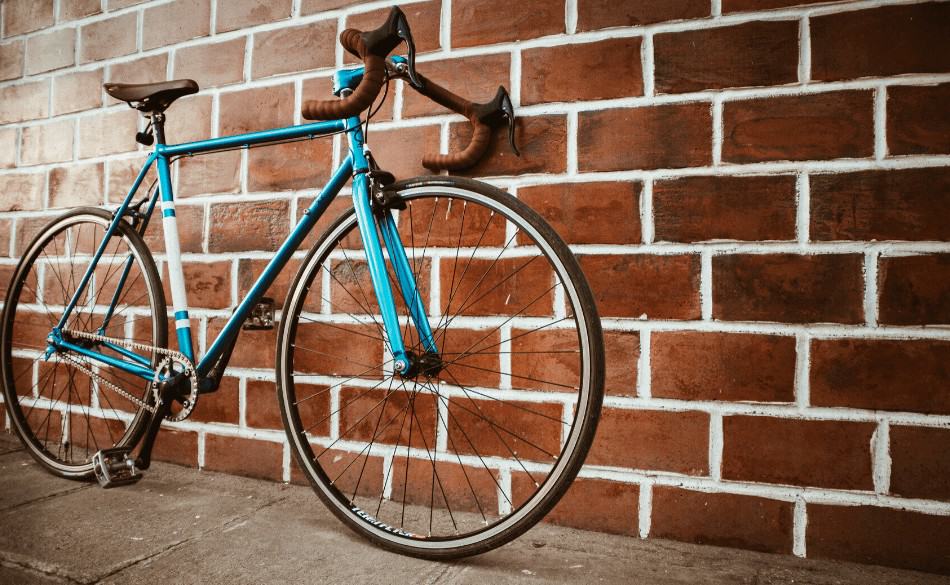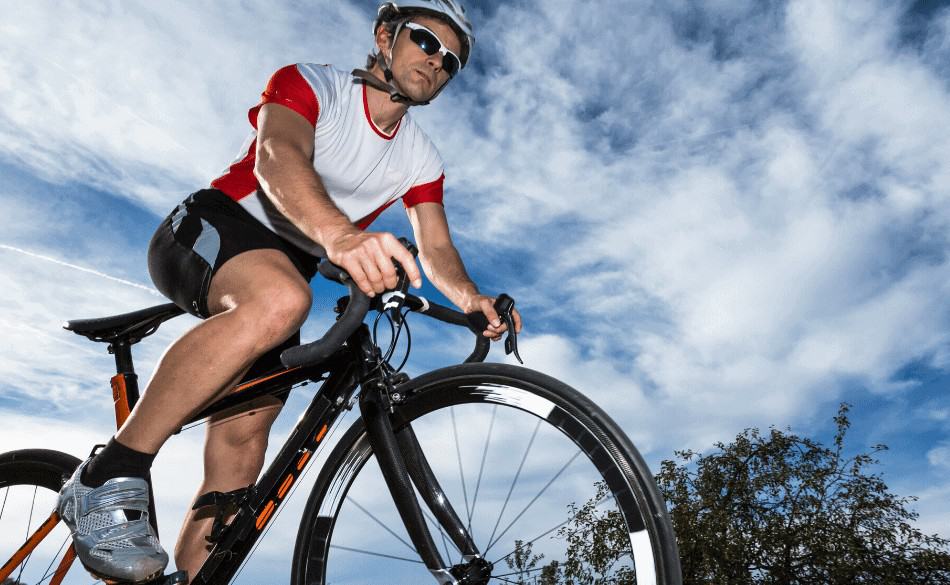
Bike Stem Calculator – UPDATED 2021 – Complete Bike Stem Length Guide
Page Contents
Selecting the ideal stem length refines and perfects the art of bike handling and steering. While fine-tuning a rider’s position on the bike, a lot “rides” upon the stem length. An ideal stem length addresses factors like rider’s comfort, equal distribution of body weight, biomechanics and performance needs.
While stem length is highly subjective and there is no ‘one-size fits all’, there are certain factors every rider should consider for a comfortable biking experience.
In this guide, we are breaking down the major criteria to look for. If you are looking to upgrade your existing stem length or buying a new stem for your road bike, we help you calculate your ideal stem length. Alternatively, if you don’t have a bike yet, you can choose among the best road bikes here.
Road Bike Stem Length Guide
Bike stems look like a standard equipment without any science to it, however, they are highly influential when it comes to comfort and control. The wrong stem length will not only make it difficult to reach for the handlebars, it will also destabilize the steering and affect body position on the bike.
The two major aspects to take into consideration are stem length and stem rise/stem angle.
Stem Length
A lot of positioning and responsiveness depends on the length of the stem. While road riders choose their stem length based on bike-fit and positioning, off-road riders often determine stem length based on how the bike handles.
Shorter stem lengths provide quicker and more responsive bike handling which is paramount for off-road riding. A longer stem tends to sift your body weight towards the front wheel, thus shifting more weight to the front of the bike. This, in turn, helps to stabilize the steering and give a slower response and better control while cornering.
Ideally, the stem should be long enough to shift some of the extra weight over to the front wheel to have stability over the steering and to improve grip on the road. Hence, longer stems are best suited for competitive racers who travel at high speed and need that kind of extra stability.
Simply put, a longer stem provides you a more stretched out and aggressive posture while shorter stems bring bars closer to the saddle and put you in a more comfortable position.
Although this is a general outline, the stem length should be decided based on a complete bike fit. This depends on your torso length, arm length and flexibility. Take into account that frame size will play a large role in determining the correct stem length.
Stems between 100-120mm of length are known as long stems and anything below 90mm is considered as short stems. Generally on a road bike stems tend not to be shorter than 90mm and longer than 130mm.
Stem Rise
The stem rise or the stem angle is basically the rise between handlebars and stem. It is usually measured in degrees. Stem rise affects the bike positioning and your reach to the handlebars. The higher degree of rise, the more upright your position will be. Alternatively, an inverted stem rise lowers the handlebar’s height in relation to the ground and keeps you in a lower position.
Similar to stem length, you will have to experiment with stem rise to find the ideal balance of pedalling comfort and handling response.
Which bike stem should you buy?
If you are a leisure rider, a more upright position will give you the most optimum control and comfort. In this case, your choice of stem should not be longer than 100mm with a 10 degree of stem rise.
If you are a regular rider, you may appreciate a neutral position with a slight rise in stem. Around 6 to 7 degrees of stem rise and a stem length that complements your position would suit you the best.
If you are an experienced racer, most likely you have been through a bike fit process and know the length of the stem you need.
6 Degree Vs 17 Degree Stem – How They Compare?
Bike stems range between negative 10 to positive 17 degrees. When a stem has a positive degree, it is called a “rise”. The stem with a negative degree is commonly referred to as “having a drop”. The higher the stem rise is, the more upright your position will be. Alternately, the lower the drop of the stem is, the more aggressive your bike will feel.
Stems can be easily switched around to get the opposite angle, depending on your needs. For example – a negative 10 degree drop can be flipped to bring about a positive 10 degree rise.
Leisure riders are most comfortable with a slight rise whereas competitive racers prefer to go with anywhere from a negative drop to a +-6-10deg in order to achieve the desired body position.
Assuming a stem length of 110 mm, a – 6 degree rise will give you a saddle to handlebar drop of 57 mm. For the same stem length, going by a -17 degree step, your saddle-to-bar drop will increase by 21 mm.
By that calculation, going from -6 degrees to -17 degrees with a 110mm stem is going to make the saddle to bar drop about 2cm lower which will bring a major change in the riding position. Therefore it is highly recommended to opt for a stem angle somewhere in between 6 degree and 17 degree, for example – a 10 degree stem.
How Do You Measure A Bike Stem Length?
– Rest the bike on a stand or against the wall to stabilize it to the ground.
– Using a measuring tape, measure the center bolt to the center of the handlebar.
– If your measurements are in centimeters, convert them into millimeters by adding an extra 0 at the end.
Bike Stem Calculator
Unfortunately there are no reliable ways to determine stem length by a bike stem calculator. If you are moving your position from one bike to another, this can be done by measuring your old position from the tip of the saddle to the center of the handlebar.
Also make sure you measure the drop from the saddle to the handlebar. This can be down by measuring horizontally from the tip of the saddle to the center of the handlebar. Then measure the distance of the drop. This will give you your current saddle to handlebar drop.
Cyclocross Stem Length
The ideal cyclocross stem length depends on the body’s biomechanics and the handling of the bike. Frame size, handlebar selection and personal preference play a major role also. Take into account that a cyclocross riders position is somewhat more upright than that of a road racer. Because of this, the sweet spot for cross stem length is said to be somewhere around 110 mm, with 100mm being too short and 120mm too long.





